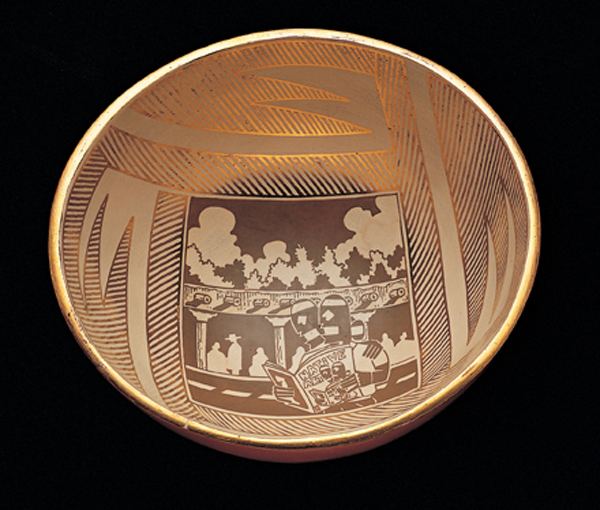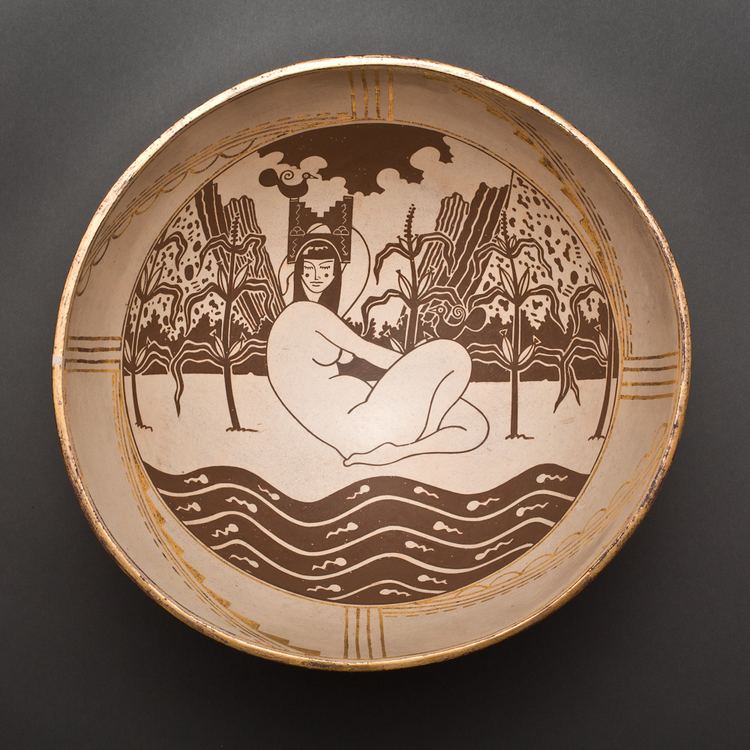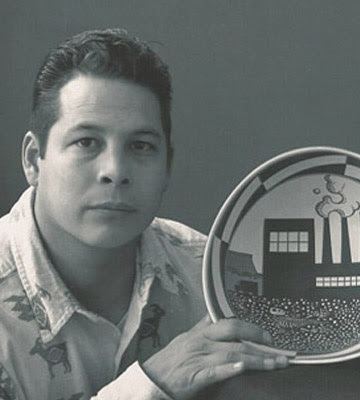Nationality Cochiti Pueblo Role Artist | Name Diego Romero Siblings Mateo Romero | |
 | ||
Movement Pueblo art, Native pop art Known for Pottery, Printmaking, Painting | ||
Diego Romero (born 1964) is a Cochiti Pueblo artist living in New Mexico.
Contents
Background

Diego Romero was born in Berkeley, California in 1964. His father is Santiago Romero, a Cochiti Pueblo Indian, and his mother is Nellie Guth, a European-American. Diego, like his mother, was born and raised in Berkeley, California, but spent his childhood summers at Cochiti, New Mexico. Romero's father was a traditional painter, despite losing one of his hands in the Korean War. Although, in his youth, Romero related to his tribe only with great difficulty, as a young man the Cochiti council honored him by granting him the right to occupy his grandfather's property. His brother Mateo Romero is also a notable painter.
Art career

Raised in Berkeley, California, Diego Romero is a third generation Cochiti Pueblo artist who specializes in pottery (he also does printmaking). One of his collaborators in pottery was Navajo - Hopi ceramicist Nathan Begaye (1958 - 2010). After art school in California, he attended the Institute of American Indian Arts (IAIA) in Santa Fe. After one year at IAIA, he enrolled at Otis Parsons School of Design in Los Angeles, where he earned his BFA degree. He moved on to University of California, Los Angeles where he received his MFA in 1993.
Romero's pots marry Cochiti Pueblo ceramics with his love of comic books, superheroes, mythology, and pop culture. He honors his Cochiti worldview and his ancestors' method of coiling clay but expands the tradition with imagery and painting treatments. He is a self-proclaimed "chronologist on the absurdity of human nature" who draws on prehistoric Ancestal Pueblo and Mimbres ceramics, Greek vessels, and pop culture. Romero's narratives combine humor and often-biting social commentary that communicate messages about contemporary Native American life, including difficult issues surrounding Native politics, history, identity, war, and alcoholism.
In the 1990s, he catapulted to notoriety in the American Southwest ceramics world with his "Chongo Brothers" polychromed earthenware series. A chongo is a Southwest Native man who wears his hair in a traditional bun. Some of the characters figured in his work reflect a Greek painting style, and portray idealized, muscular bodies. Romero's work explores gender politics, sexuality, and multifaceted identities of Native people, and all the while, relates the contemporary to the ancient.
A collection of his work toured Europe in 2006. He is represented by galleries in New York and Santa Fe, including Robert Nichols Gallery.
